 Among lovers of indoor plants, orchids are in demand. All varieties of tropical flowers require some care, very often sick and whimsical care, not many decide to start them. The most common question is why the orchid has sluggish leaves and what to do in such situations.
Among lovers of indoor plants, orchids are in demand. All varieties of tropical flowers require some care, very often sick and whimsical care, not many decide to start them. The most common question is why the orchid has sluggish leaves and what to do in such situations.
Content
Leaf damage
Leaf wilting is caused by partial root damage. This can be observed with the main types of diseases that affect a houseplant. Infected roots lose their functionality and cannot provide the rest of the plant.
In addition to the fact that mineral fertilizers do not reach the leaves, water from them is used to support the more important cells. This leads to a change in the natural green color to yellow, the sheet, due to its condition, becomes unable to maintain its own weight and sags.
The second reason the leaves wilt in the orchid is also related to the roots. It's not about their disease, but about a banal lack of moisture. The plant simply has nowhere to take moisture if the soil is overdried. This leads to drying out and the death of the roots. And if the plant is watered very regularly, then they can even begin to rot.
Orchid Care Rules
It is better to get rid of the disease starting with the diagnosis. After all, it is not the symptoms that need to be treated, but the causes of their occurrence:
To begin with, let us determine whether something is amiss with the leaves ...
- Carefully inspect the sheet, paying attention to its color.
- If the whole leaf has a uniform green color, and it can vary from light to dark, then, fortunately, it is healthy.
- If the plant contains spots of yellow or light brown color, this means that it gradually fades.
- Spots can be located both at the edges and in the center of the sheet, and if it has completely changed its color, then it will not recover anymore.
But color is far from the only distress signal. The surface structure also changes if it lacks moisture. Firstly, due to the lack of moisture, the cells lose their elasticity, and do not look like they look in a healthy state. This inevitably leads to a "softening" of the orchid leaf, which by touch becomes like wet bread, and outwardly dull stretches down.
[sc name = "info" text = "Since there is not enough water, wrinkles appear on the surface. The most wrinkled areas are yellow, directly wilted areas. ”]
Roots and leaves - the main centers of damage
So, instead of vigorous and cheerful, elastic and healthy leaves, we found the opposite: yellow spots, wrinkled surface, leaves stretching lifelessly to the ground. The problem is obvious - in the orchid the leaves fade.
 Leaf wilting is caused by both external and internal factors. This may be caused by insufficient moisture or illness. In any case, you need to inspect the visible part of the root visually. How to determine if he is healthy? Let's start with the color, the roots should have a silver tint, maybe a slight difference in color.
Leaf wilting is caused by both external and internal factors. This may be caused by insufficient moisture or illness. In any case, you need to inspect the visible part of the root visually. How to determine if he is healthy? Let's start with the color, the roots should have a silver tint, maybe a slight difference in color.
By their consistency, they should be firm to the touch, but not too dry and rough. If all these conditions are met, and the pot itself, in which the flower was planted (and is now growing), does not become heavier than its usual state, therefore, the roots themselves are completely healthy, and the plant just needs to be watered.
Any appearance other than healthy should be a concern. Orchid is a plant that has some cycles, during which there is a natural wilting of leaves.In such cases, you do not need to raise an alarm.
Let's start with the color, charcoal black - definitely does not have to itself. Changing the structure of the leaves is one of the most obvious factors of damage. Sick roots are excessively dry and rough. However, they are rarely dense, most often there is a softened consistency. All these factors together mean that the plant needs treatment, otherwise it may die.
Treatment
If during the inspection it was revealed that the roots are absolutely healthy, and the weight of the pot is not suspicious, then the orchid needs to be soldered. Consider what to do if the orchid has sluggish leaves, and what measures should be taken:
- When watering the pot, it is deep enough immersed in water - to the very shoulders.
- In this condition, it must be left for several hours. If during the inspection it was revealed that the roots are diseased, then you will have to work longer.
Sometimes this condition is caused by excessive watering (the roots begin to rot due to excess moisture), sometimes by the excessive density of the substrate, due to which the roots become unable to breathe and dry out.
Transplantation can help restore all the vital processes of a plant. Orchid should be taken out of the pot, if possible, free the roots. All areas that look affected are removed. Then the plant can be relocated to its new place of residence. For guaranteed recovery, watering with a fungicide solution is required.
What is a danger to orchids?
[sc name = "info-dashed" text = "Like any tropical plant, a flower cannot be exposed to direct sunlight, since under natural conditions it grows in the jungle, where a minimal amount of light penetrates. You need to put it only on the windowsill, where direct sunlight does not fall. Otherwise, intense evaporation of moisture from the surface of the leaves will lead to negative consequences. ”]
If it was not possible to avoid the negative consequences, it is recommended:
- Remove the plant from the windowsill for several hours. During this period, the roots and leaves will be able to recover and normalize all processes of life.
- Over time, we begin to spray leaves abundantly, so that the cells begin to absorb moisture from the surface.
Orchids should now be placed on a windowsill with minimal lighting and no draft.
It is recommended for the speedy restoration of the plant, add a few drops of succinic acid to the water. With this mixture you need to water the orchid for 4-5 days. It all depends on what degree of dehydration is observed.
Professionals know what to do if, after transplanting, the orchid has sluggish leaves. Changes are observed until the roots take root in the new soil. As a result, the orchid will take on a full-fledged appearance and will delight you.
Frostbite and pests
 Frostbite is one of the most common incidents awaiting an orchid when grown in Russia. Not all window sills have good thermal insulation, so drafts and low temperatures negatively affect the condition of the plant. If the temperature around the leaves is below 15 degrees, then the orchid will gradually begin to fade, as it is thermophilic. Immediately remove the pot from the windowsill.
Frostbite is one of the most common incidents awaiting an orchid when grown in Russia. Not all window sills have good thermal insulation, so drafts and low temperatures negatively affect the condition of the plant. If the temperature around the leaves is below 15 degrees, then the orchid will gradually begin to fade, as it is thermophilic. Immediately remove the pot from the windowsill.
Red and colorless ticks very often affect domestic flowers. They appear if the plant is not watered and the soil is constantly dry. Thus, if you properly care for home flowers, then the pests will not appear.
Insects attacked the flower, and you do not know why the orchid leaves wither and what to do should begin active work to control pests. In this case, the orchid is removed away from other flowers and covered with a plastic bag. With increasing humidity, all ticks will die.
Lack of moisture
 Sluggish leaves of an orchid are observed with non-delivery or excess of irrigation rates. There are no definite exact recommendations, since watering is necessary depending on air dryness, room temperature, season and other factors. The owner of the flower must coordinate his actions. You need to understand that the root system itself regulates the need for moisture, you only need to make sure that the soil in the pot does not dry out and is not too wet.
Sluggish leaves of an orchid are observed with non-delivery or excess of irrigation rates. There are no definite exact recommendations, since watering is necessary depending on air dryness, room temperature, season and other factors. The owner of the flower must coordinate his actions. You need to understand that the root system itself regulates the need for moisture, you only need to make sure that the soil in the pot does not dry out and is not too wet.
[sc name = "info-hand" text = "The main advice on what to do if the orchid has sluggish leaves - it is recommended to water it, lowering the pot for 60 minutes in water. No need to fill the ground, as this technique leads to the leaching of useful components. The water into which the flower will be immersed can be diluted with 2-3 drops of succinic acid. ”]
If you control the humidity of the soil, and the plant is in a dark place, not exposed to pests, then it will not be threatened.

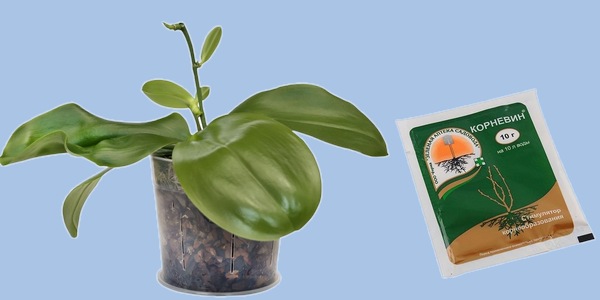
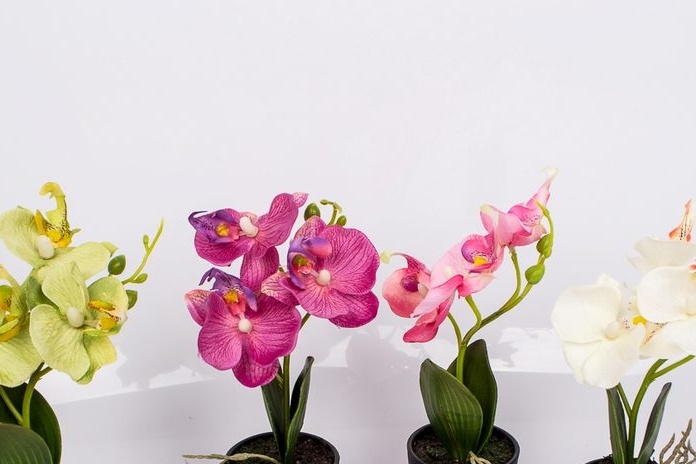
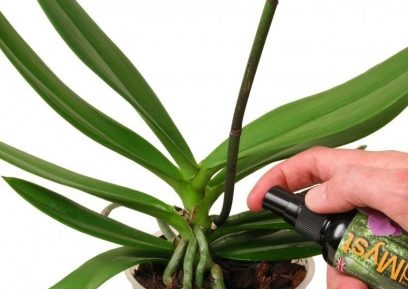
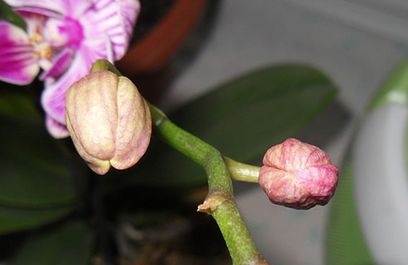 Reasons why orchids fall flowers and what to do
Reasons why orchids fall flowers and what to do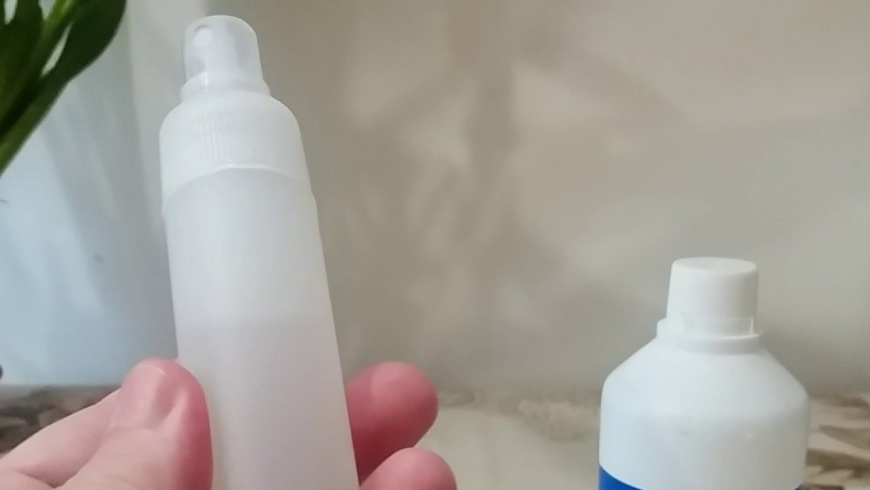 How to use hydrogen peroxide for orchids and why
How to use hydrogen peroxide for orchids and why Midges are wound up in the orchid: effective ways to get rid
Midges are wound up in the orchid: effective ways to get rid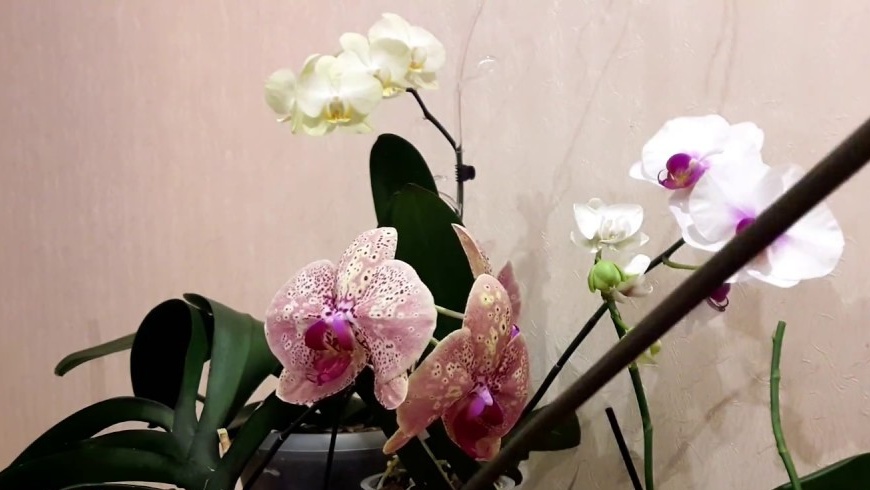 Is it possible to transplant an orchid during flowering
Is it possible to transplant an orchid during flowering